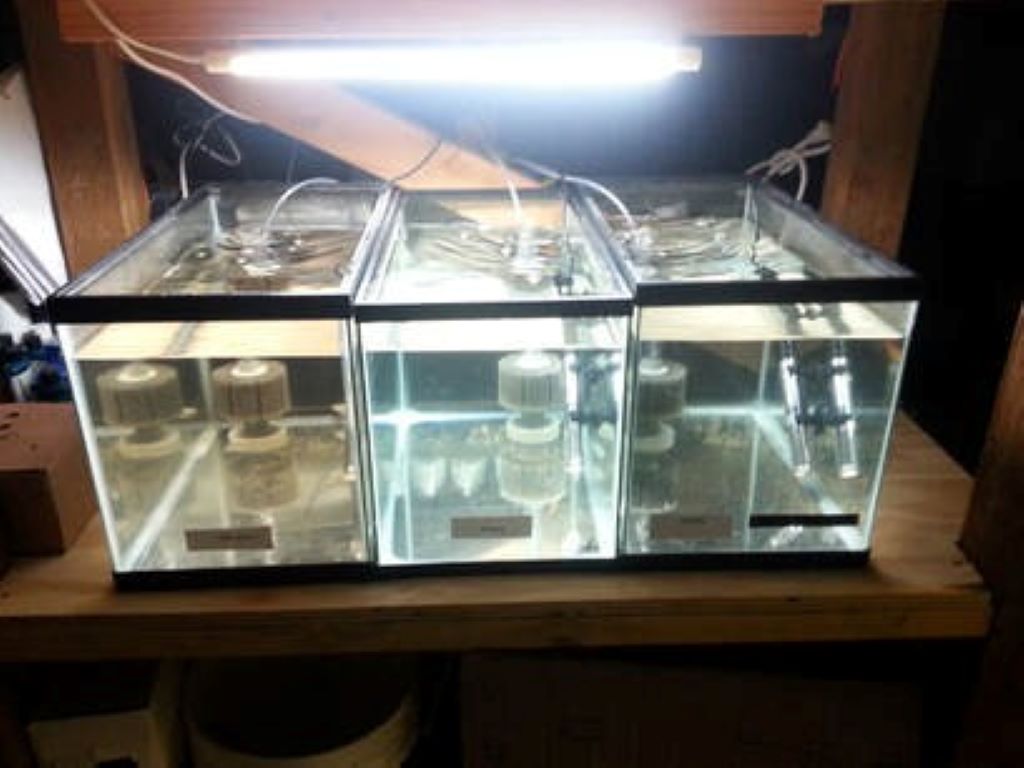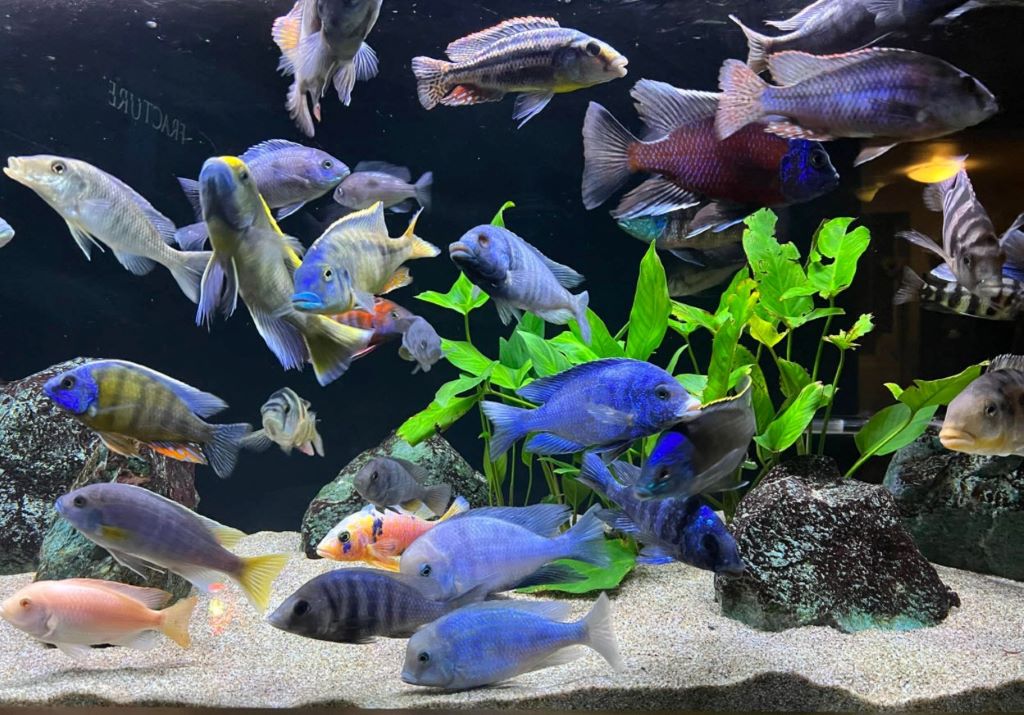A deep dive into the effects of humidity on your aquarium lighting system, with practical tips to ensure optimal performance and longevity.
The shimmering dance of light through your aquarium, highlighting the vibrant colors of your aquatic inhabitants, is a captivating sight. But have you ever considered the silent battle being waged above the waterline? How humidity impacts aquarium light performance is an important factor to consider, as humidity can significantly affect the performance and lifespan of your aquarium lighting system.
While we often focus on the water parameters within our tanks, the air above plays a crucial role in maintaining a thriving aquatic environment. Excessive moisture can wreak havoc on electrical components, leading to corrosion, short circuits, and premature failure. In this comprehensive guide, we’ll explore the multifaceted impact of humidity on aquarium light performance, delve into the science behind it, and equip you with the knowledge to safeguard your investment and ensure your aquatic haven remains beautifully illuminated.
The Science of Humidity and Its Effects on Aquarium Lighting
Humidity, simply put, is the amount of moisture present in the air. It’s a natural phenomenon that varies depending on climate, weather patterns, and even the activities within our homes. When it comes to your aquarium, high humidity levels can create a damp environment that poses several challenges to your lighting system:
- Condensation: Warm, moist air rising from the aquarium comes into contact with the cooler surface of the light fixture. This temperature difference causes water vapor to condense, forming tiny droplets on the lights and internal components. Over time, this condensation can lead to:
- Corrosion: Water, especially when combined with minerals and salts often present in aquarium environments, can corrode metal parts, leading to rust and electrical malfunctions.
- Short Circuits: Water droplets can bridge the gap between electrical contacts, causing short circuits that can damage the light fixture and potentially pose a fire hazard.
- Reduced Light Output: Condensation on the lens or reflector of the light fixture can scatter and diminish the light reaching your aquarium, hindering plant growth and impacting the overall aesthetics.
- Heat Dissipation: Many aquarium lights, especially high-intensity LEDs, generate heat during operation. Humidity can hinder the efficient dissipation of this heat, leading to:
- Overheating: Trapped heat can cause the light fixture to overheat, potentially shortening its lifespan and even causing damage to sensitive electronic components.
- Reduced Efficiency: Overheating can also reduce the efficiency of the light fixture, meaning it consumes more energy to produce the same amount of light.
- Salt Buildup: Aquarium water, especially saltwater tanks, contains dissolved salts. These salts can become airborne through evaporation and settle on the light fixture. Over time, salt buildup can:
- Obscure the Lens: Salt deposits can form a hazy film on the lens, reducing light penetration and affecting the color spectrum reaching your aquarium.
- Corrode Metal Parts: Salt is corrosive and can accelerate the deterioration of metal components within the light fixture.
Recognizing the Signs of Humidity Damage
Early detection of humidity-related issues can save you from costly repairs or replacements. Keep an eye out for these telltale signs:
- Visible Condensation: Check the light fixture for water droplets, especially after the lights have been on for a while.
- Rust or Corrosion: Inspect metal parts for signs of rust or corrosion, such as discoloration or flaking.
- Dimming Light: If you notice a decrease in light intensity, it could be due to condensation or salt buildup on the lens.
- Flickering or Intermittent Operation: This could indicate a short circuit caused by moisture.
- Unusual Noises: Buzzing or crackling sounds from the light fixture could be a sign of electrical problems.
Protecting Your Aquarium Lights from Humidity

Fortunately, there are several practical steps you can take to mitigate the impact of humidity and ensure the longevity of your aquarium lighting system:
-
Proper Ventilation:
- Aquarium Hoods: If you use an aquarium hood, ensure it has adequate ventilation to allow for air circulation and prevent moisture buildup. Consider adding small fans to improve airflow.
- Room Ventilation: Good room ventilation is essential, especially in smaller spaces. Open windows or use exhaust fans to reduce overall humidity levels.
- Dehumidifiers: In particularly humid climates or rooms, consider using a dehumidifier to control moisture levels.
-
Distance and Placement:
- Maintain Distance: Ensure there is sufficient distance between the water surface and the light fixture to minimize condensation. A general rule of thumb is to keep the light at least 6 inches above the waterline.
- Avoid Splash Zones: Position the light fixture away from areas prone to splashing, such as filter outlets or areas where fish tend to jump.
-
Regular Maintenance:
- Wipe Down Condensation: Regularly wipe down the light fixture with a clean, dry cloth to remove any condensation.
- Clean the Lens: Periodically clean the lens with a soft cloth and a mild cleaning solution to remove salt buildup and ensure optimal light transmission.
- Inspect for Damage: Regularly inspect the light fixture for signs of corrosion or damage. Address any issues promptly to prevent further deterioration.
-
Choose the Right Lighting:
- Waterproof Fixtures: Consider using waterproof or water-resistant light fixtures, especially for open-top aquariums or those with high evaporation rates.
- LED Lights: LED lights generate less heat than traditional fluorescent or metal halide lights, reducing the risk of condensation and overheating.
-
Monitor Humidity Levels:
- Hygrometer: Use a hygrometer to monitor humidity levels in the room and around the aquarium. This will help you identify potential problems and take corrective action.
Popular FAQs about Humidity and Aquarium Lighting
Q: Can high humidity cause my aquarium light to explode?
A: While extremely rare, it’s not impossible. Excessive condensation leading to a severe short circuit could potentially cause a small explosion. However, modern light fixtures are designed with safety features to minimize such risks. Regular maintenance and proper ventilation are crucial to prevent such occurrences.
Q: How often should I clean my aquarium light?
A: The frequency of cleaning depends on the humidity levels and the type of light fixture. In general, wiping down condensation daily and cleaning the lens weekly is a good practice. However, in high-humidity environments, more frequent cleaning may be necessary.
Q: Can I use any cleaning solution on my aquarium light?
A: It’s best to use a mild cleaning solution specifically designed for aquarium equipment. Avoid harsh chemicals or abrasive cleaners that can damage the lens or housing.
Q: My aquarium light is already showing signs of corrosion. What should I do?
A: If you notice corrosion, it’s essential to address it promptly. Clean the affected area with a rust remover and consider applying a protective coating to prevent further corrosion. If the damage is extensive, it may be necessary to replace the light fixture.
Q: Are LED lights completely immune to humidity?
A: While LED lights are generally more resistant to humidity than traditional lighting options, they are not entirely immune. Condensation can still affect their performance and lifespan, so it’s crucial to take preventative measures.
Q: Does humidity affect the color temperature of my aquarium light?
A: While humidity itself doesn’t directly affect the color temperature, condensation or salt buildup on the lens can alter the light spectrum reaching your aquarium. This can impact the perceived color of your fish and plants.
Q: Can I use a regular household fan for aquarium ventilation?
A: While a regular fan can help improve air circulation, it’s not ideal for long-term use in an aquarium environment. The moisture and salt spray can damage the fan motor over time. Consider using fans specifically designed for aquariums or those with corrosion-resistant materials.
Q: Is it safe to use my aquarium light if I see condensation on it?
A: It’s best to avoid using the light if you see significant condensation. Wipe down the fixture thoroughly and allow it to dry completely before turning it on. If condensation persists despite preventative measures, it may indicate a more serious issue that needs to be addressed.
Conclusion: Shining a Light on Humidity Control
Humidity, while a natural part of our environment, can pose a significant threat to the performance and longevity of your aquarium lighting system. By understanding the science behind humidity’s impact and implementing the preventative measures outlined in this guide, you can safeguard your investment and ensure your aquatic haven remains beautifully illuminated for years to come. Remember, a little proactive care goes a long way in maintaining a thriving and visually stunning aquarium.
Read More:




